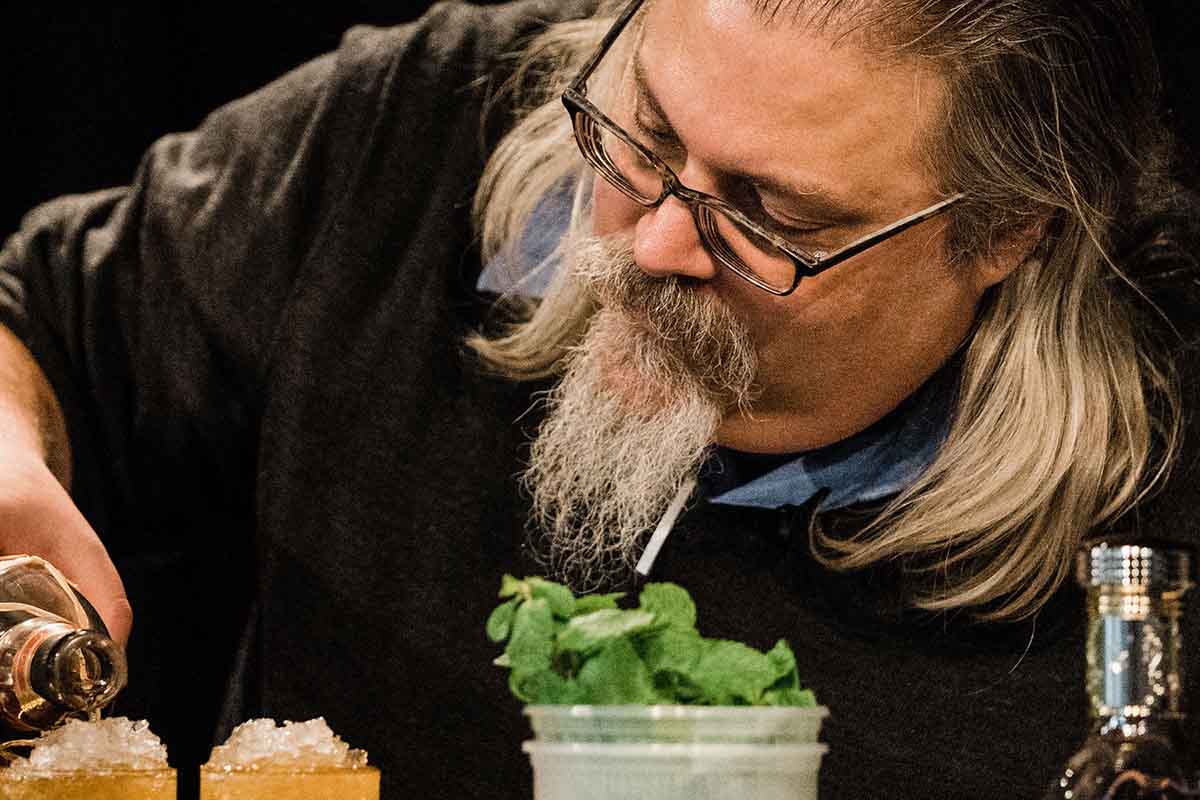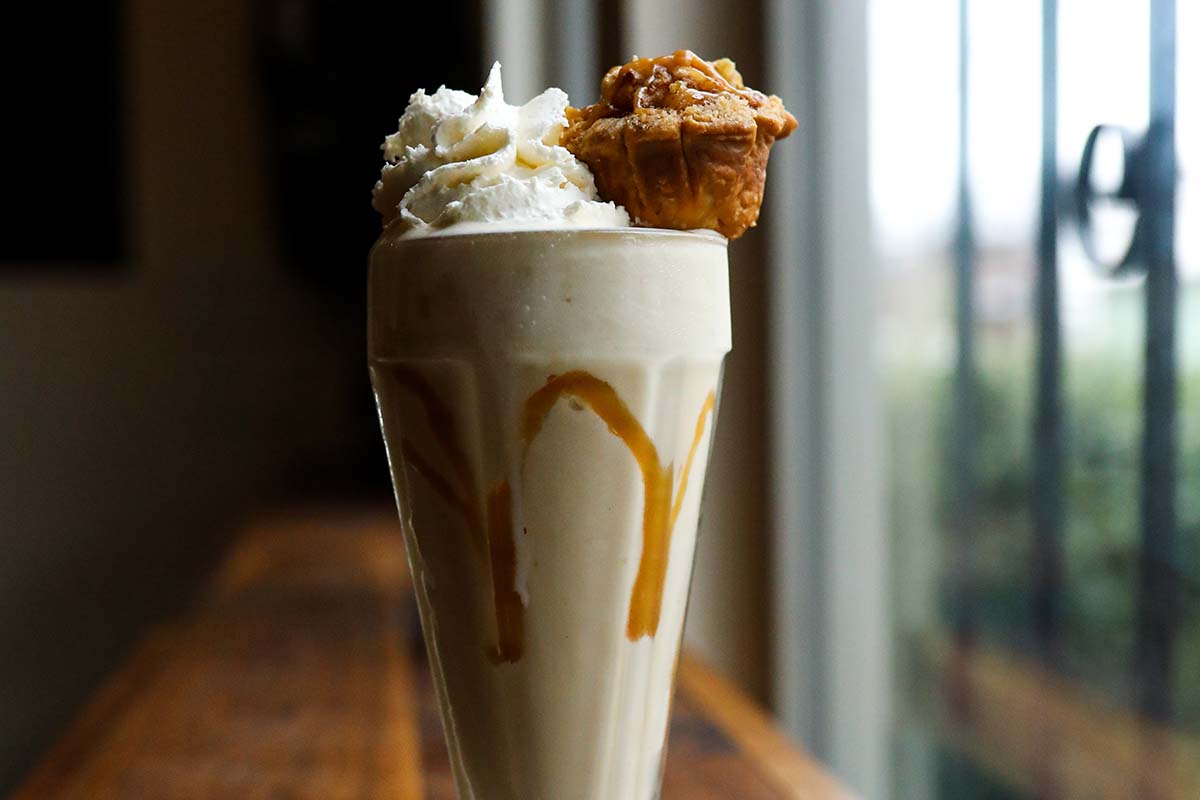This week marked the arrival of The Oxford Companion to Spirits and Cocktails, an 800-plus-page compendium of the world’s best drinks and the histories — often misperceived — behind them.
This new Oxford tome is the nine-year project of cocktail historian David Wondrich and the Daily Beast’s Half Full editor Noah Rothbaum, along with over 150 contributors across the drinks spectrum. (Wondrich and Rothbaum also host the booze podcast “Life Behind Bars”).
It’s an essential resource for anyone who cares about what goes in their glass. And while you can use the Companion as a cocktail book — there are recipes, and the people who contributed are pretty much the giants of the alcohol world — it also serves as a historical guide in a field that’s sadly lacking in authoritative narratives.

Basically, everything you think you know about drinks might be wrong, at least when it comes to how they originated. As Rothbaum notes in the book’s acknowledgments; “The experience of working on this book was a rare opportunity to give spirits and cocktails their proper due and to set the record straight on many long-held myths, legends and misconceptions.”
Below, a talk with the two authors about setting the history of booze on a corrected path:
InsideHook: What was the inspiration for this massive book?
David Wondrich: In this case, the inspiration came from Oxford University Press, who wanted to add a Companion to Spirits and Cocktails to round out their Companions to wine and beer. I think I was the only person who was both interested in a lot of weird booze and crazy enough to take the job.

IH: Overall, it took about nine years to put together. What was the biggest challenge?
DW: The chief ones for me were time — for me, a big part of making a living involved traveling and writing columns, both of which played havoc with the long stretches of time needed to pull together a book this size — and the increasing scarcity of reliable sources once you got out of Europe and North America.
Noah Rothbaum: The organization involved with this project was alone a major undertaking. Coming up with the hundreds of entries we wanted to include in the book, figuring out who we would ideally like to write them, and then approaching those folks — that took several years.
IH: When it comes to the backgrounds on these drinks, I wanted to point out one specific example. You admit, for instance, the origin of the Negroni has an inconvenient gap and that only a general outline of its history is available. How often did this happen where you may not have been able to find a definitive origin or answer?
DW: Such gaps are the rule more than the exception. It’s difficult to imagine this now, when every time a bartender twitches her spoon or a distiller installs a new piece of tubing there’s someone there to blog it or at least put it up on Instagram, but this stuff was very sparsely documented at the time, and that was by people who mostly didn’t think it was all that important. More than once I’ve found artcles saying, and I paraphrase, “I toured the firm’s new modern distillery, which had a lot of pipes and vats, but since I can’t understand any of that sort of thing I’ll leave it at that.”
IH: When doing research for these spirits and cocktails, what entry ended up surprising you the most?
DW: There are so many. One big one is that rum was first made in the Caribbean, as we’re always told. It was first called “rum” there, that much is true, but sugarcane spirit goes back to Asia, to at least two hundred years before Columbus brought sugarcane to the Americas, and maybe even a thousand years before that.

IH: Why do you think there are so many misperceptions and myths about the origins of drinks, spirits and distilleries?
NR: It’s really a combination of things that led to all of these myths and legends being created. For a long time in recent history, drinks weren’t considered a serious subject to write about or research. At the same time, you had brands creating all types of marketing materials and advertisements that often contained very little truth but were very memorable. Add to the mix that some of these myths were created decades and decades ago. As a result, they were never fact checked because they became so well-known and accepted as truth.
IH: If you could only show somebody one entry from this book, what would that be and why?
NR: I really love the Tom & Jerry entry written by Audrey Saunders. It includes a concise history of the drink that debunks several long held misconceptions and includes a recipe for it from one of the world’s best bartenders. The entry even lists a short bibliography of sources if readers want more on the topic.
IH: I realize this is more than 800 pages, but is there anything you had to leave out?
DW: Unfortunately, when you’re covering something as broad as distilled spirits and how they’re consumed, even 800-plus pages and 1,150 entries is only scratching the surface. We had to leave out a great many talented and influential bartenders and distillers, for instance, lest the book become simply a who’s who, plus a whole lot of excellent brands and such, for the same reason.
Join America's Fastest Growing Spirits Newsletter THE SPILL. Unlock all the reviews, recipes and revelry — and get 15% off award-winning La Tierra de Acre Mezcal.























